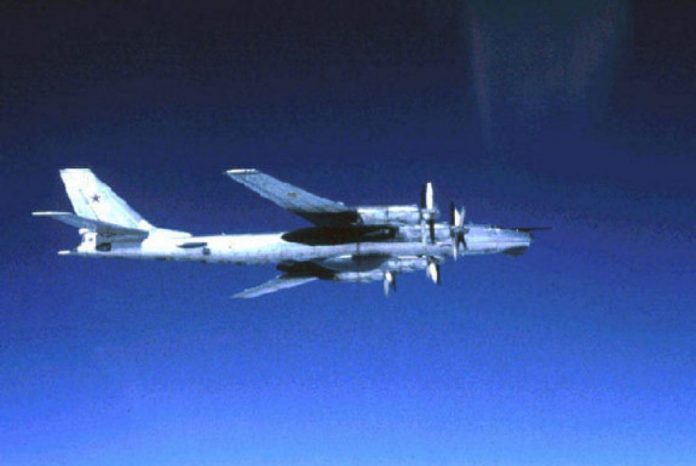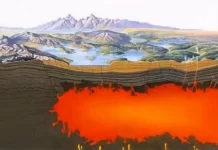Canadian jets intercept Russian bombers, first time in two years.
American and Canadian fighters jets intercepted two Russian military aircraft that flew north of Alaska and Canada on Thursday night, U.S. Air Force officials said today.
North American Aerospace Defense Command (NORAD) also confirmed there was another incident on Wednesday night with another pair of Russian aircraft that did not require an intercept, bringing the total number of sightings to four in as many days.
“Alaskan-based NORAD F-22 Raptors and Royal Canadian CF-18 Hornets intercepted and visually identified two Russian TU-95 bomber aircraft” flying around the north coast of Alaska and Canada, said Mary Ann Clemons a NORAD spokesperson.
The Russian bombers did not enter American sovereign or Canadian airspace, Clemons said.
The U.S. military’s Air Defense Identification Zone stretches 200 nautical miles from the Alaska coastline into international airspace. Aircraft entering that zone are asked to identify themselves as they transit through. American territorial airspace begins 12 nautical miles from American shores.
On Wednesday, two Russian IL-38 maritime patrol aircraft flew halfway up the Aleutian Islands chain, according to a U.S. official. Clemons said the Russian aircraft were identified during a maritime patrol close to Alaska. These aircraft were identified by NORAD, but no aircraft were scrambled to do so by visual means.
On Monday, two F-22 Raptor fighters and an E-3 AWAC reconnaissance aircraft intercepted two TU-95 Russian bombers that had flown into the ADIZ 100 miles south of Kodiak Island.
On Tuesday, two TU-95 bombers flying up the Aleutian Island chain were tracked by an E-3 AWAC aircraft as they flew 35 miles from the Alaska coast before turning around. A third aircraft, an IL-38 flying a different route briefly entered the ADIZ before turning back.
Each encounter has received a different response from NORAD.
“The intercepts are professional ones in accordance with international norms,” said Captain Scott Miller, the chief spokesman for NORAD.
This week’s intercepts mark the first times since July 4, 2015 that NORAD aircraft have intercepted Russian military aircraft flying near the American ADIZ. Russian military aircraft have never strayed into American territorial airspace.
Miller said the activity this week is not unprecedented given that the peak of long range Russian bomber flights into the AZID occurred in 2014.
A year later that activity dropped off significantly, probably due to a 2015 safety stand down implemented by the Russian military following a slew of deadly crashes involving TU-95 Bear bombers.
Miller noted that Thursday night’s encounters highlighted “the strength of the bi-national relationship of NORAD”, a joint American and Canadian command based in Colorado Springs, Colorado.
As the Russian bombers transited through the American ADIZ into the Canadian ADIZ they were accompanied by American and Canadian aircraft belonging to different NORAD regions, a transition Miller characterized as “seamless.”















